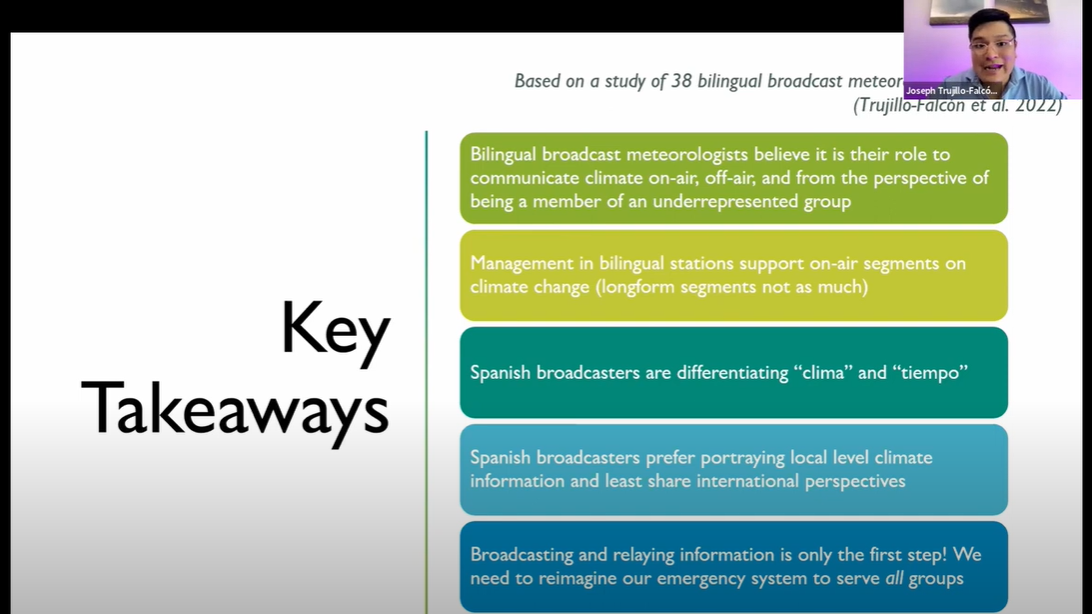Global Change Seminar Summary: Communicating Risk in a Changing Climate

This post was written by 2022-23 Global Change Fellow Emily Nastase, summarizing the second seminar in the Spring Global Change Seminar Series, “Communicating Risk in a Changing Climate,” on April 12. The panel was moderated by Global Change Fellow, Lily Raye. The seminar planning team also included Bethany Wager, Greivin Ulate Ramirez, and Christina Perella.
Communicating Risk in a Changing Climate was a seminar hosted by the USGS Southeast Climate Adaptation Science Center’s 2022–2023 Global Change Fellows. In this seminar, a panel of risk communication experts shared their knowledge and expertise on public risk perception and the societal impacts of climate change.
First, we heard from Dr. Kenzie Krocak from the University of Oklahoma Institute for Public Policy Research and Analysis about how different demographic groups use climate information and severe weather alerts to make critical, timely decisions regarding their safety. Dr. Krocak explained how the characteristics of the forecast, the message, and the audience all play a role in how important weather information is received by the public. For weather information to effectively reach the public, that information must be received, understood, trusted, and prompt a response from the audience. There is no singular method that can be used to reach all audiences – practitioners should vary their strategies to reach multiple demographics.
Next, Joseph Trujillo Falcón, a Graduate Research Assistant at the Cooperative Institute for Severe Weather Research and Operations at the University of Oklahoma, described how weather and climate information reaches Spanish-speaking communities in the United States and how language inequities can inhibit risk communication with these audiences. He explained how bilingual and Spanish speaking broadcasters are playing a critical role in communicating climate and weather information with underrepresented groups. Given the shortcomings of the current emergency systems in the US, it is important to redesign our emergency systems to serve all groups.
Finally, Max Cawley, the Director of Climate Research and Engagement for the Museum of Life and Science in Durham, North Carolina, explained how the timing and form of messages influences audiences’ understanding of the information. When you have risk information to share with your audience, consider following the “27-9-3” model: limit your message to contain no more than 27 words, which can be delivered in 9 seconds, and has just 3 main ideas. Audiences’ perceptions of risk are context-dependent and will vary substantially – there is no such thing as a “general audience” when it comes to risk communication.
Collectively, this panel highlights how the form, source, and timing of information related to weather and climatological risks impact audience perception. There is no “one size fits all” solution for risk communication with multiple audiences.
- Categories:
